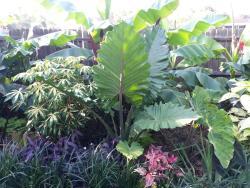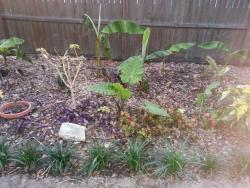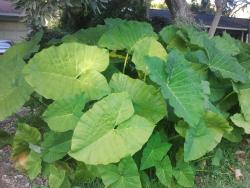Hey everyone!
I've been collecting Alocasia and Colocasia for about a year now. I've got a few minor questions that I haven't found reliable answers to, and would appreciate any help you could provide.
1. Supposing an EE is in good shape, should you cut off the dying leaf & Petiole (well after a new leaf has risen from it), or does the plant reabsorb water and nutrients from it? Does removal of dying bits speed up growth in any way?
2. Is there a way to induce flowering, or is it always seasonally related? I've got dozens of Elephant Ears, and I can't fathom how the experts like LariAnn might cross plants without knowing the timetable for specific assorted inflorescence(s).
3. When do Alocasias (like the portora) develop their trunk? Does it vary, or is it a natural point in their maturity?
4. Most of My portora are approaching 6 feet in height, without any evidence of a trunk. Will the plant maintain most of it's top-size once the trunk begins growing? Some random photos I've seen show an almost stunted growth to the top after the trunk gains significant size.
5. Is their a practical lifespan to Alocasia?
6. One last one. In the first photo below, are these Xanths?
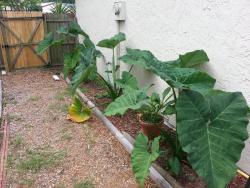
Thanks in advance!
Mike
Oh, an extra photo or two, just because.
Young Alocasia macrorrhiza
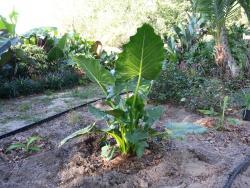
One of my Alocasia portora, ~1 year old
